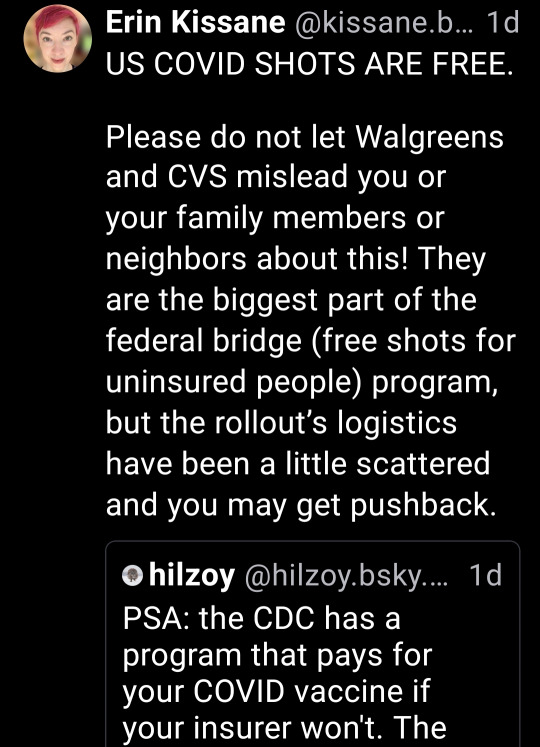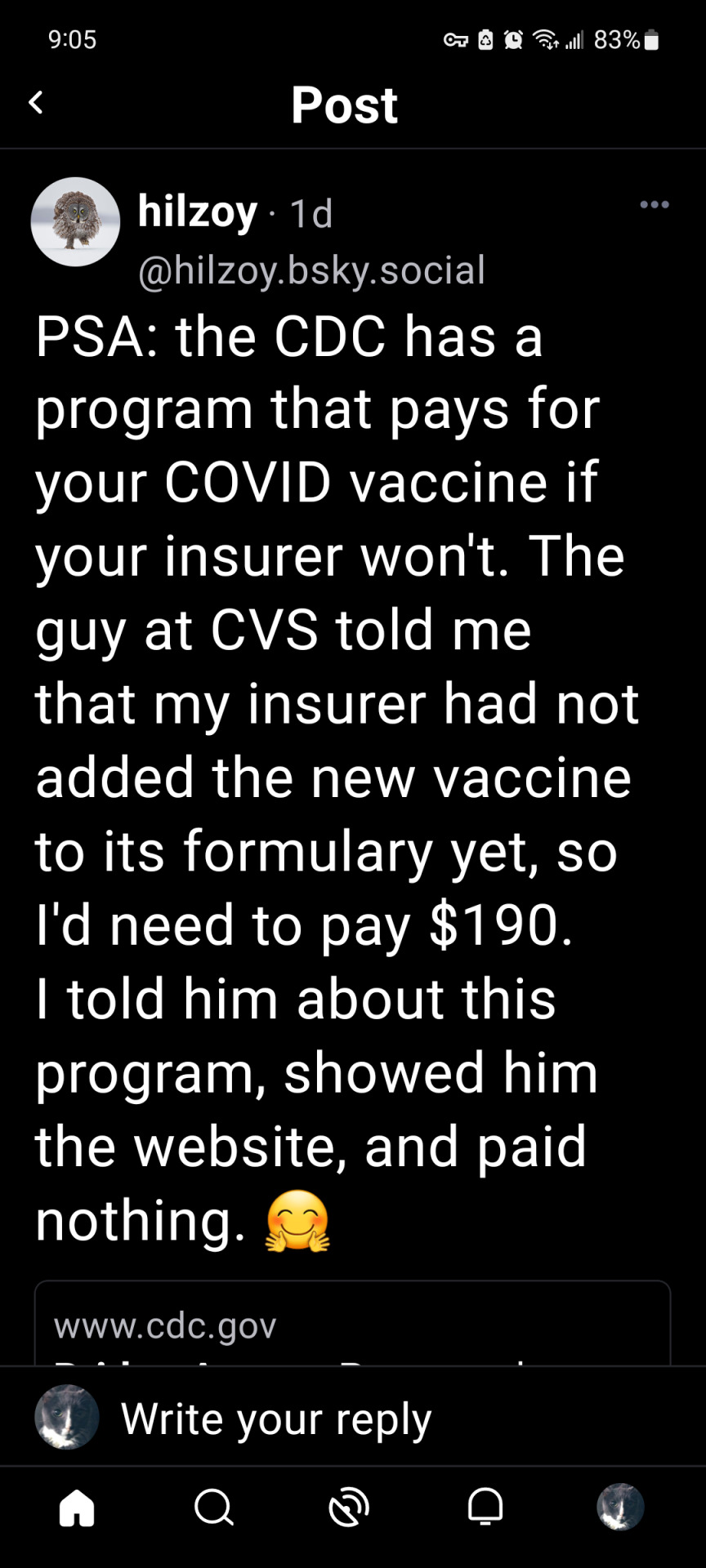#COVID VARIANT
Explore tagged Tumblr posts
Text


#covid#covid vaccine#covid variant#covid vax#spooniestrong#spoonie#disability#chronic illness#disabled
9K notes
·
View notes
Text
79 notes
·
View notes
Text
Out of curiosity, are there any variants going around where there are no respiratory symptoms but there is heavy fatigue? neither theta and I have any resp symptoms or fevers or anything, but we've been so dead tired that nothing's getting done. We're both chronically ill and disabled, but it's weird for both of us to be this tired and flaring at the same time
#covid 19#covid variant#swear to god if I get covid right before I'm scheduled to be vaccinated I'm gonna be so pissed
25 notes
·
View notes
Text
There’s a new covid surge. Immunocompromised people are encouraged to mask up. Some schools are going remote again. I just got my booster shot and I’m not afraid of wearing a little face covering. I’m already home most days. This won’t be much of a change for me.
#alexa rambles#covid#covid 19#covid boosters#covid variant#stay safe#be smart#mask up#wear your mask
6 notes
·
View notes
Text
WHY ARE PEOPLE SUDDENLY GETTING COVID-19 THIS SUMMER? UNDERSTANDING THE INCREASE
by ads Converclick on June 26, 2024
Explore why COVID-19 cases are rising this summer and learn about the new FLiRT variants driving the increase. Discover how the Status™ COVID-19/Flu A&B test provides rapid, accurate diagnosis to manage and prevent respiratory illnesses effectively. Stay informed and protect your health.
0 notes
Link
The latest SARS-CoV-2 variant, JN.1, was first detected in the U.S. in September 2023. By mid-December, it accounted for about half of all COVID cases in the country,1 and calls to get the latest “updated” COVID shot resumed. Cases associated with this variant are also on the rise in the U.K., China and India.2 Turtles All The Way Do... Anonymous Best Price: $21.69 Buy New $22.38 (as of 06:13 UTC - Details) According to the U.S. Centers for Disease Control and Prevention, the rapid spread of JN.1 suggests it may be more transmissible and/or has greater immune-evading abilities:3 “JN.1 is similar … Continue reading →
0 notes
Text
The Civil Code of Holiday Cheer
Amidst the chaos of celebrations, make sure you're protected from winter diseases and soaring JN.1 Covid by following this civil code of holiday season.
#holiday season#decoration art#celebrations#covid variant#christmas#new year#alcohol-free sanitizer#hand sanitizers#surface sanitizers#wash hands daily#healthy gift#new year party
0 notes
Text
https://www.secondmedic.com/blogs/rapid-covid-variant-detection-groundbreaking-air-monitor-delivers-results-in-just-5-minutes
0 notes
Text
youtube
Masks.
Conspiracy Theories.
Politics.
To the people, by the people, for the people, but only till getting elected. After that, it is all a selfish struggle for self-satisfying Agendas....
The WHO has disclosed some time ago, that there is a new Covid Variant called Kraken. Or another mutated version of omicron. Apparently the most infectious variant till date. No idea about the Prognosis after Infection.
Do your own Research.
(This video is about 2 years old)
Take care.
#covid#covid 19#Face Masks#Safety#Effectiveness#Conspiracy Theories#Conspiracies#Politics#Nobody Cares#WHO#Variant#Covid Variant#Kraken#Omicron#Youtube
0 notes
Text

be on the lookout for symptoms of covid the respiratory virus
---
source on hospitalizations: - government of canada - cbc news
1K notes
·
View notes
Text
cornelius hickey spring breakers (gone wrong) (gone evil)
flash warning, warning for blood, warning for like everything else that happens in the terror
#cornelius hickey#the terror#tuunbaq#polar#sorry about the quality but all i have rn is covid and my phone. no computer to speak of#cdc just added ‘making that amv you’ve been talking about’ to the list of symptoms for the new variant#hickeygibson#if you squint
184 notes
·
View notes
Text

I've been seeing tags like these for a while now, "x gave me couvid" or "I think I have couvid," and I've never understood how they're supposed to be funny. Congratulations, you've allowed yourself to be fooled into making a joke out of a virus that continues to disable and kill people daily 👏😀
#you might think I'm being a stick in the mud#frankly I dont give a shit#there are once again TWO NEW COVID VARIANTS#covid#covid 19
104 notes
·
View notes